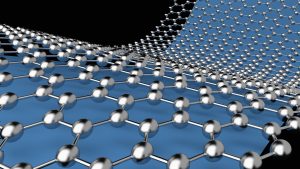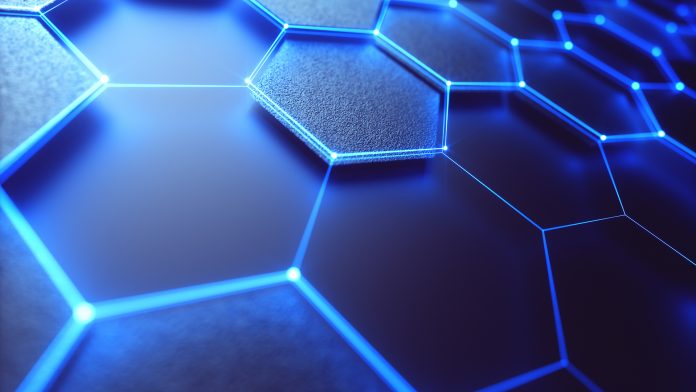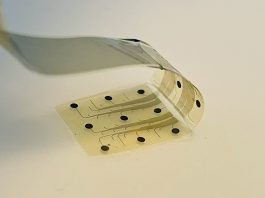Researchers from Columbia University have used long graphene ribbons to create devices that offer a new level of predictability and control over both twist angle and strain.
In the emerging field of twistronics, researchers are drastically changing the properties of 2D materials like graphene. They are making subtle changes, as small as changing the angle between stacked layers from 1.1° to 1.2°.
Twisted layers of graphene have been show to behave in ways that single sheets have not. The changes include acting like magnets, electrical superconductors, or insulators, due to small changes in the twist angle between sheets.
Theoretically, any property could be changed by turning a knob that transforms the twist angle. However, the reality is not so straightforward, explains physicist Cory Dean.
Two twisted layers of graphene can become a new material. But why these different properties manifest is not yet understood, let alone something that can be controlled.
Now, Dean and his lab have developed a new fabrication technique that could help physicists probe the fundamental properties of twisted layers of graphene in a more systematic and reproducible way.
The work, ‘Programming twist angle and strain profiles in 2D materials,’ published in Science, demonstrated the team’s use of graphene ribbons, rather than square flakes, to create devices that offer a new level of predictability and control over both twist angle and strain.
Changes in graphene result in new behaviours
Typically, graphene devices have been assembled from atom-thin flakes of graphene that are a few square millimetres. The twist angle between the sheets is fixed, and flakes can be hard to layer together smoothly.
“Imagine graphene as pieces of saran wrap—when you put two pieces together you get random little wrinkles and bubbles,” said postdoc Bjarke Jessen, a co-author on the paper.
Bubbles and wrinkles are similar to changes in the twist angle between the sheets and the physical strain that develops in between. These can cause the material to buckle, bend, and pinch randomly.
All these variations can bring about new behaviours. However, they are difficult to control within and between devices.
Graphene ribbons can smooth resulting strains
The team’s research shows that, with an atomic force microscope, a graphene ribbon can be bent into a stable arc. This can then be placed flat on top of a second, uncurved, graphene layer.

The result is a continuous variation in the twist angle between the two sheets that spans from 0° to 5° across the length of the device. The strain is evenly distributed throughout, with no random bubbles or winkles to contend with.
“We no longer have to make ten separate devices with ten different angles to see what happens,” said postdoc and co-author Maëlle Kapfer. “And, we can now control for strain, which was completely lacking in prior twisted devices.”
Confirming the uniformity of the devices
The team used special high-resolution microscopes to confirm how uniform the devices were.
With spatial information, they were able to develop a mechanical model that predicts twist angles and strain values based on the shape of the graphene ribbon.
Characterising the properties of graphene ribbons
The paper focused on characterising the behaviour and properties of graphene ribbons as well as other materials that can be thinned into single layers and stacked on top of each other.
“It’s worked with every 2D material that we’ve tried so far,” noted Dean.
The research will be used to explore how the properties of quantum materials change
Now, the team plan to use their new technique to find out how the fundamental properties of quantum materials change as a function of twist angle and strain.
Prior research has shown that two twisted layers of graphene act like a superconductor when the twist angle is 1.1.
However, competing models explain the origins of superconductivity at this ‘magic angle’, and predict additional magic angles that have been too difficult to stabilise.
With devices made with ribbons, which contain all angles between 0° and 5°, the team can more precisely explore the origins of this phenomenon, and others.
“What we are doing is like quantum alchemy: taking a material and turning it into something else. We now have a platform to systematically explore how that happens,” said Jessen.









